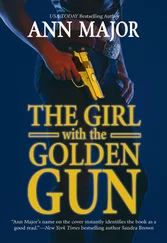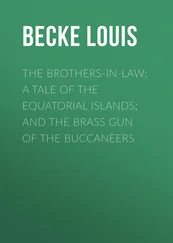“I don’t really have a good answer as to why I did not further pick up the signature,” Dick said in testimony one year later in a Pennsylvania court. Guns Unlimited later caught the omission, Dick testified, and sent Hill a letter stating “please come in at your earliest convenience and sign this form for us.”
The letter came back, however, bearing a Postal Service notice that the address did not exist.
♦ ♦ ♦
April 8, 1991, by all counts, was a stunningly beautiful day in Philadelphia, the sun bright and temperatures in the seventies. The banners along the Benjamin Franklin Parkway moved gently in the breeze. At the offices of CIGNA Corp., an insurance company, four executives gathered for a walk to a popular restaurant on the parkway, where they planned to celebrate the forty-ninth birthday of a colleague, Peter Foy, who was married and the father of two children. The lunch lasted only an hour. Everyone had chicken salad. The executives—Peter Foy, Robert Dowe, John Senatore, and Leonard Allen—had to be back at CIGNA for a one P.M. meeting.
They walked back down the parkway, Foy beside Dowe, Sena-tore beside Allen.
Witnesses, including a Philadelphia police officer, saw a blue Chevy Cavalier pull up at the curb. They saw the driver, a short black man, calmly exit the car, walk up behind the four men, and open fire with a large pistol. Moments later, he just as calmly returned to the car, adjusted his side mirror, and drove off. The car had Virginia plates.
Robert Dowe hadn’t seen the car or its driver. He heard an explosion. “I did not see anything happen to Peter,” he later testified. “The only thing I knew was that a round was fired and it was very, very close, and as I was trying to get down, I felt my—I believe I was trying to turn my head because I knew the shot was coming from behind me, and I felt my head pop. I knew I was shot in the head.”
For no reason, purely at random, Dr. Jean-Claude Pierre Hill, carrying one of the stainless-steel Colt pistols he had bought a week before from Guns Unlimited, had chosen to attack the four executives. Foy, who weighed 284 pounds and stood six foot two, went down first. The .45 bullet entered the right side of his head just above his ear, then exited on the left side, leaving a massive “stellate,” or star-shaped, exit wound. A hydrostatic shock wave—a pressure surge driven ahead of the bullet—fractured his skull in many places, even the orbital plates behind his eyes. The bullet macerated his brain—“not lacerated,” emphasized James Lewis, a forensic pathologist with the Philadelphia medical examiner’s office—“but macerated . The bullet basically destroyed his back portion of his lobes of the brain.” Foy was pronounced dead at Hahnemann Hospital at 6:47 the following morning.
Robert Dowe too had been struck in the head, but he had been lucky. The bullet entered at his temple, exited near his ear, then reentered his body, plunging into his right shoulder and exiting through his arm. Another of Hill’s bullets struck John Senatore in the arm, then continued on into his chest where it punctured a lung. Leonard Allen, the luckiest of the three, dove for cover when he heard the shots. “As I was diving,” he testified, “something glanced through my hair.” He was uninjured.
Jean-Claude Hill was found guilty of first-degree murder, with the caveat that the jury believed he was mentally ill.
♦ ♦ ♦
“How did you feel when you heard about this?” I asked Mike Dick. “That this guy had taken these guns you sold him, even though you had doubts, and killed somebody—the ultimate deprivation of somebody’s rights? Did it cause you any sleepless nights?”
“No.”
“Did you get drunk?”
“No. I did everything I possibly could have, short of compromising something I feel very strongly about. And that is, I’m not going to decide if you are a worthwhile person or not. He gave me red flags. I checked him out. Had there been anything, had ATF found mental instability in his background, had ATF said he was [dishonorably] discharged, I could have gone to him and said, ‘Jean-Claude, I’m not going to sell you these guns.’ But I’m not going to decide somebody’s character based on my impressions of him, I’m just not gonna do it. It’s not necessarily tied to any Second Amendment right to keep and bear arms, it’s not tied to my right as a retailer not to do business with somebody. I just would not want to put myself in the position of deciding someone else’s character arbitrarily based on my own opinion. Empowering people to do that is dangerous.”
In most jurisdictions in America, however, there is little else to protect society from sales of handguns. Form 4473, far from helping to keep guns out of the wrong hands, has become a conduit for the discharge of responsibility. You would have to be naive indeed to put a yes in any of the eight boxes asking if you have been indicted, have been convicted of a felony, are a fugitive from justice, an addict, an illegal alien, have renounced your citizenship, or have ever been committed to a mental institution. In most jurisdictions no formal channel exists to check the truth of your answers. (In 1989, Virginia established an “instant-check” system that requires dealers to run a quick criminal check on every purchaser. But the system only looks for Virginia convictions and tells nothing about whether a buyer has been committed to a mental institution or is addicted to drugs.) One can argue that it is unfair to ask America’s gun dealers, who after all are merely businessmen, to go beyond what the law requires of them. Nevertheless, the dealers and the gun lobby, in particular the NRA—as I’ll show in Chapter Ten—played a large role in shaping the very laws that now allow gun dealers to disregard whatever qualms they may feel about selling guns to particular individuals.
The result is yet another of those curious ironies that mark America’s gun culture. On the one hand, federal law clearly recognizes the dangers inherent in arming certain classes of individuals, including kids, addicts, convicted felons, and the mentally ill. Yet the law offers no practical means of eliminating those buyers from the buyer pool—nothing, that is, other than form 4473. Put another way, the law asks those people who arguably have the greatest motive to lie about their backgrounds to step forward just this once and come clean, even though doing so will automatically void the purchase they had felt so compelled to make.
Form 4473 is flimsy protection indeed for an enterprise under assault from all quarters. Mike Dick must defend against trucks. He has armored his doors and windows against burglars. He must be vigilant for traffickers, killers, and other felons seeking to buy his wares—or simply to murder him and take the guns. In the early 1990s a growing number of traffickers apparently decided that killing a gun dealer might be more efficient than recruiting a straw purchaser. In 1991, ATF’s FFL Newsletter , which the bureau sends periodically to all federally licensed firearms dealers, warned of a rash of robberies and burglaries in Minnesota and Wisconsin. It devoted three pages to the July 29, 1991, robbery of an Ohio gun store during which the robber shot the dealer dead. The killer and two accomplices escaped with sixteen conventional guns—handguns, rifles, and shotguns—and eleven true machine guns, including two MAC-10s and an M-11 A1, a fully automatic variation of the MAC made by S.W. Daniel of Atlanta.
♦ ♦ ♦
Increasingly, gun dealers have taken to wearing guns during the workday. Mike Dick often wore one but, unlike his colleagues, kept his concealed. “The object of a concealed weapon is that nobody knows you have it,” he said matter-of-factly. “I wear it about forty percent of the time and let people decide if they’re going to be lucky or not.” He concedes, however, that a handgun offers only limited protection. “If somebody wants to get you, you’re never going to draw your weapon. They’re going to start blasting before they get in the door. They’re going to have surprise, and unless they’re poor shots or you’re very lucky, you’re doomed.”
Читать дальше
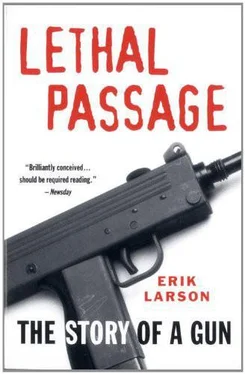
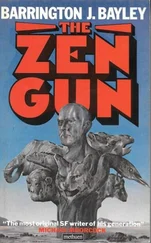
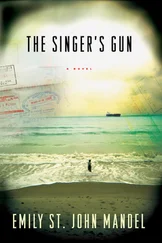

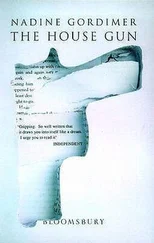

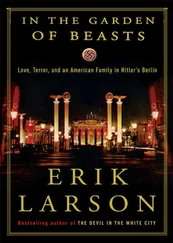

![Ричард Деминг - Whistle Past the Graveyard [= Give the Girl a Gun]](/books/412176/richard-deming-whistle-past-the-graveyard-give-t-thumb.webp)
